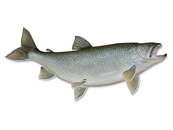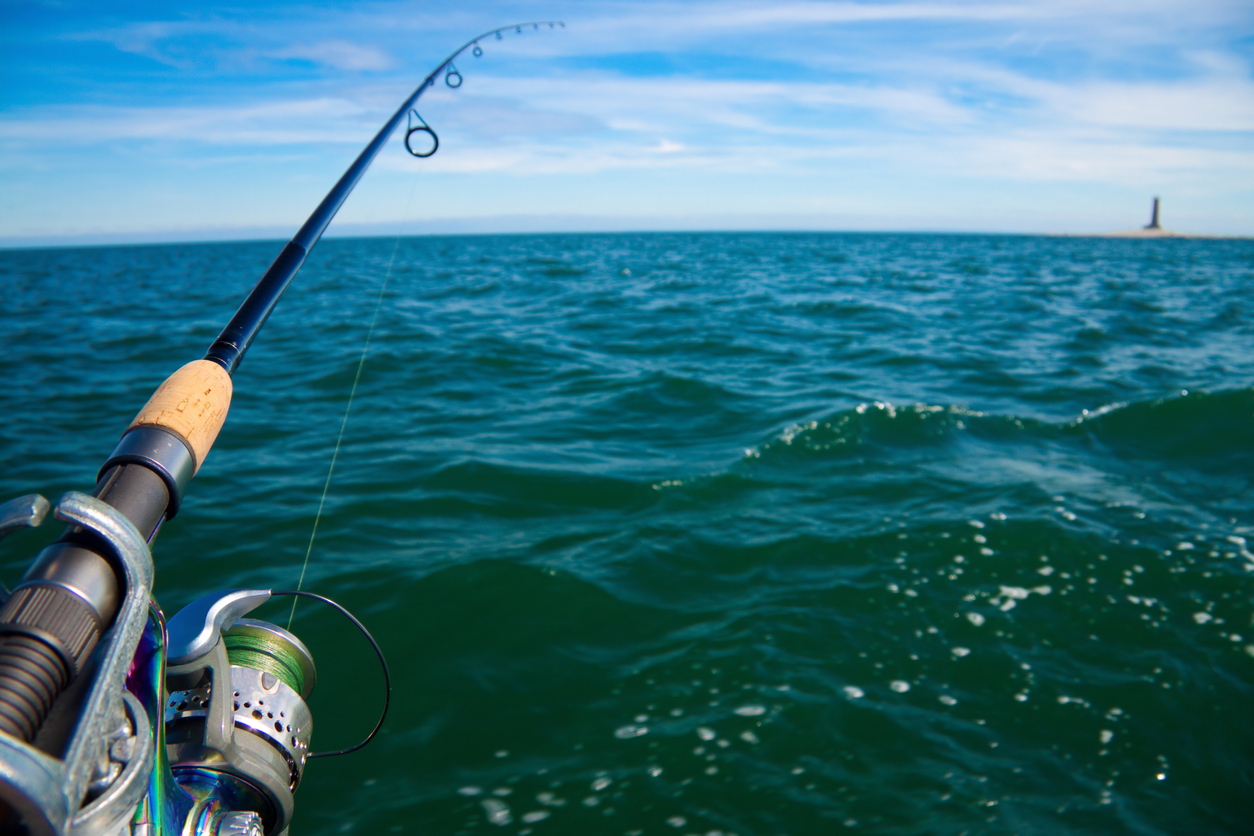Lake Trout
Salvelinus namaycush
AKA: Laker, mackinaw, lake char (or charr), touladi, togue, and grey trout.
Lake trout, like brook trout, actually belong to the char genus. They were fished commercially in the Great Lakes and on some northern Canadian lakes.
- Distinguishing Markings:
Lake trout are distinguished by their white or yellowish spots on a dark green to grayish background and a deeply forked tail.
- Size:
Lake trout are the largest trout species; the record weighing over 100 pounds.
- Distribution:
Lake trout are widely distributed from northern Canada and Alaska south to New England in USA and Great Lakes basin in Canada and the United States. They have been introduced to many areas outside its native range.
- Habitat:
Lake trout inhabit many of the larger lakes in North America. They favor cold, oxygen-rich waters.
- Food:
There are two basic types of lake trout populations: those that have year-round access to forage fish, and those that have to shift to feeding on plankton during the warmer summer months. Plankton-fed populations are very abundant, grow very slowly and mature at a relatively small size. Fish-eating lake trout grow much more quickly, mature at a larger size and are less abundant.
- Spawning:
The lake trout is a slowly growing fish that matures very late and live much longer than rainbow trout.
- Fishing Tips:
Lakers usually eat fish in their own habitat; good baits to use are smelt, suckers, chubs, other lake trout, shiners, minnows, and fish strips. They also eat crustaceans, small mammals, and insects in their habitat, often adjusting their diet to what’s available. Since the lake trout tends to live in deeper waters, leadcore line or down riggers are popular methods to get your hooks deep enough. A good starting range is 30 to 60 feet, and if that yields nothing try higher if the water temperature is cold, and lower if it is warm. If fishing with live bait fails to attract any fish, try trolling streamers. Immediately after the ice-out, lakers can be found near the surface, which calls for different fishing techniques. At this time, flies work very well, until the laker retreats to deeper waters.


